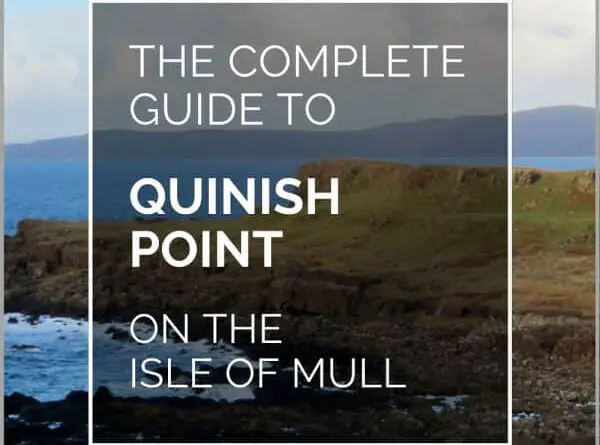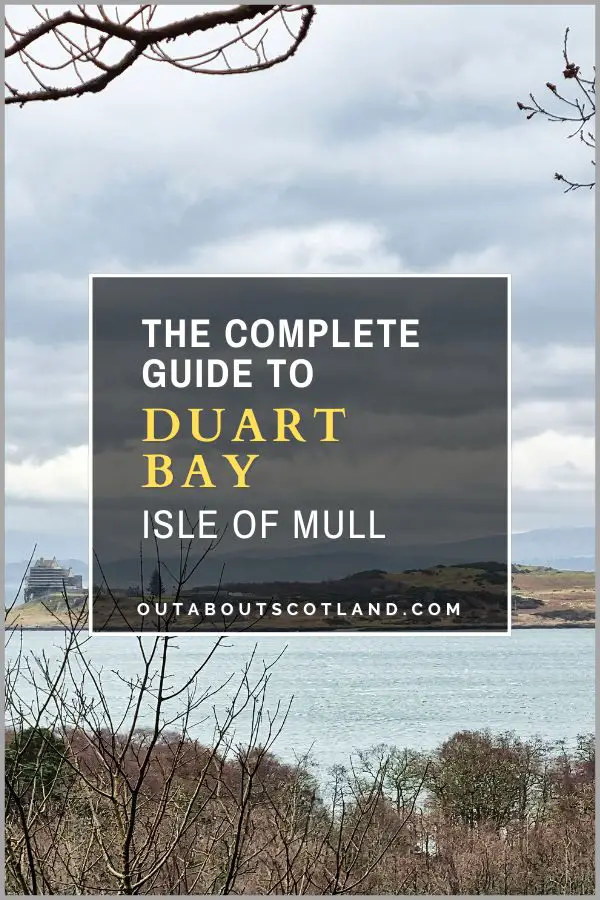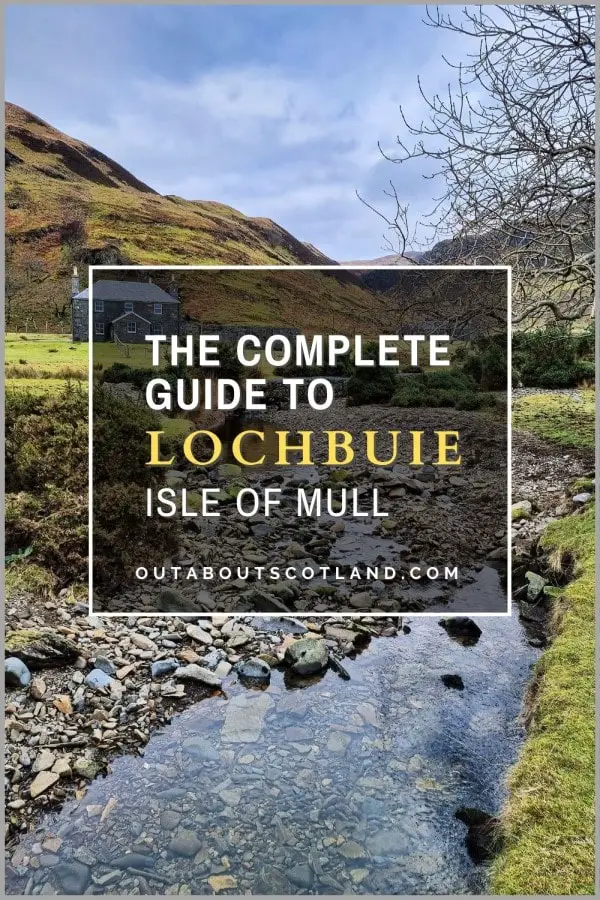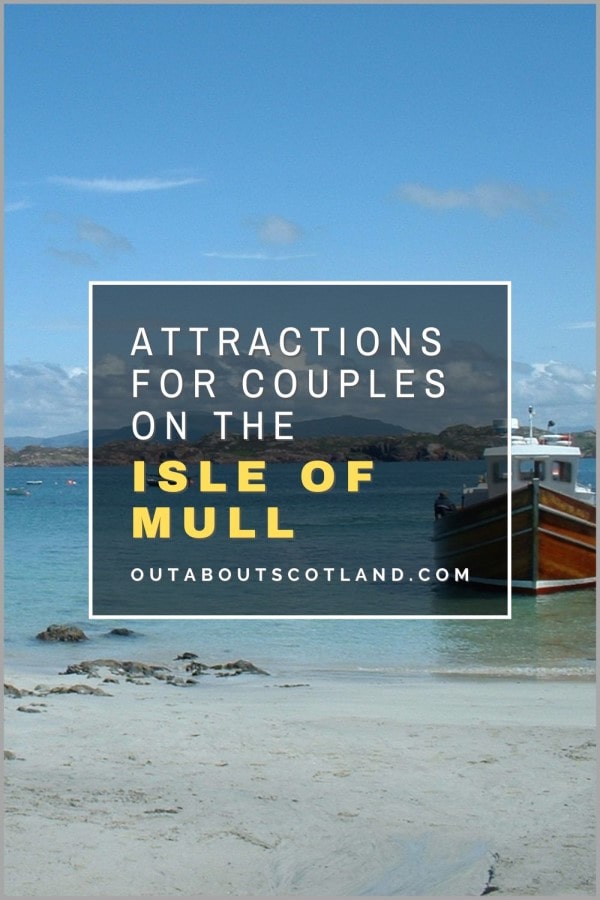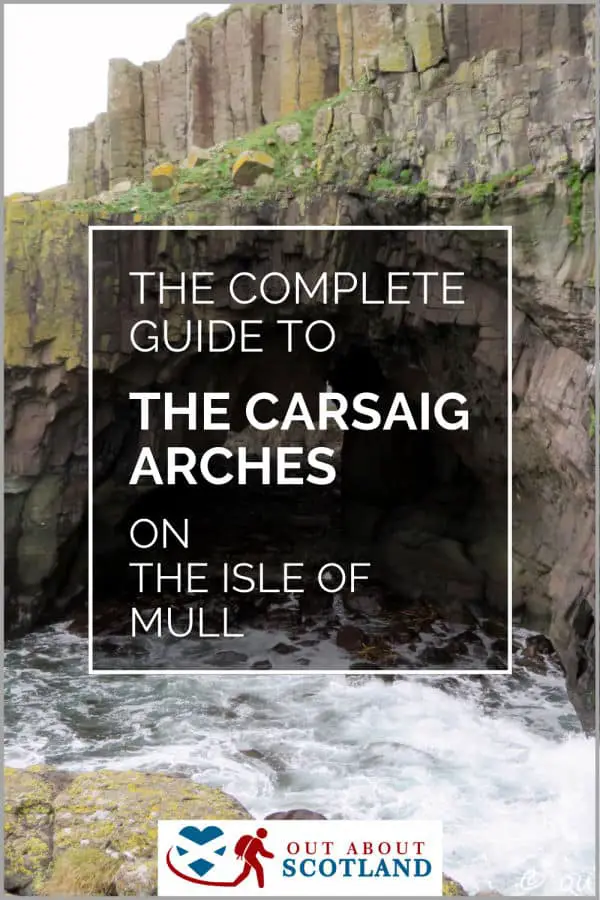Nestled in the heart of the Inner Hebrides, the Isle of Mull is a tapestry of stunning landscapes, fascinating wildlife, and historic attractions. Among its many natural wonders is a place that remains entirely untouched by tourism: Quinish Point.
In this article, we’ll walk through the mosaic of coastal heath, grasslands, and cliffside trails that make up this scenic area of Mull and offer information that will help you make the most of your visit. Whether you’re an ardent hiker, a nature lover, or simply in search of a peaceful retreat from the hustle and bustle of everyday life, this corner of the island is the jewel in the crown of Mull’s remarkable landscapes.
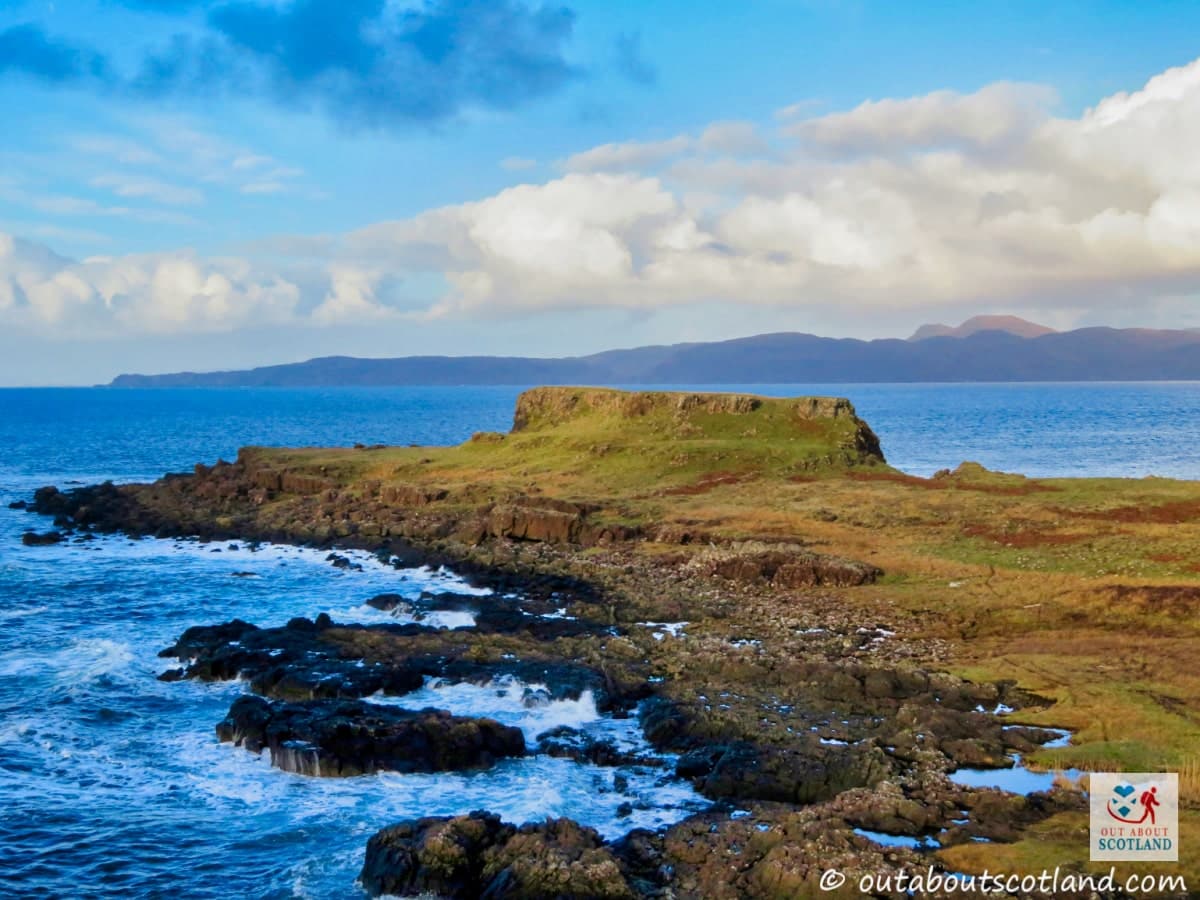
Overview
The walk from the pretty village of Dervaig to the spectacular coastline at Quinish Point has to be one of the highlights of any visit to the Isle of Mull, and if you have the time, I thoroughly recommend you get your hiking boots (link to boot reviews) on and explore this remote part of the island.
Taking around 4 hours to complete the return journey, the walk from Dervaig to Quinish Point passes some of the prettiest parts of Mull, and you’ll find yourself crossing open fields, thick woodland, clifftop viewpoints, and heather-covered moorland before finally arriving at the Quinish headland.
This dramatic stretch of coastline features two flat-topped hills that offer fantastic views of Coll, Rum, and Skye, with the rising hills of North Uist also visible on a clear day.
The Quinish Point hills, Dun Ban and Dub Dubh, are a perfect spot to rest with a well-earned picnic after your 2-hour walk, and if you have binoculars, you might be lucky enough to spot Mull’s most famous residents flying overhead – white-tailed sea eagles, otherwise known as ‘the flying door’.
The sea eagle is Britain’s largest bird of prey with a wingspan reaching a whopping 2.5 metres from tip to tip, and the sight of these incredible birds swooping overhead with the rising Hebridean islands visible in the distance has to be the highlight of any trip to this remarkable island.
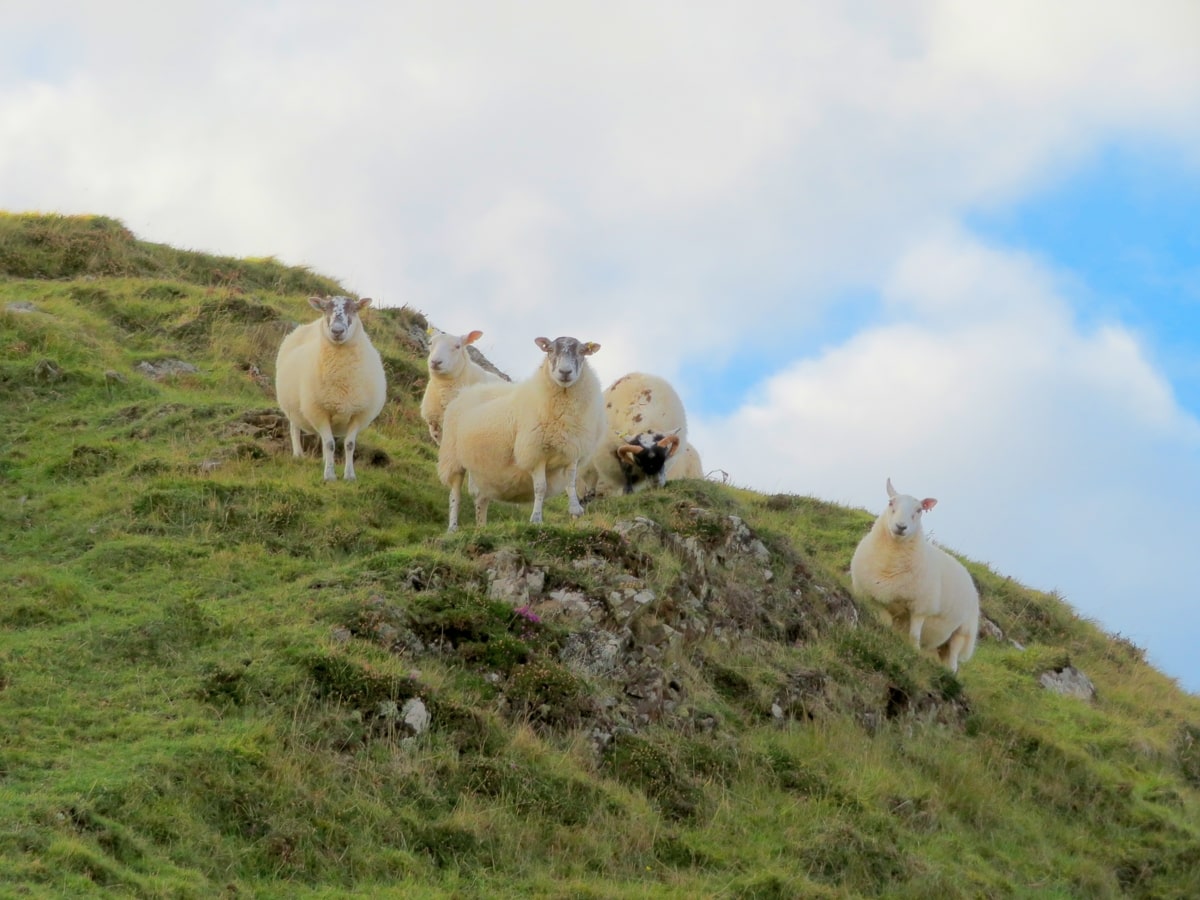
The Highlights
1: This walk is scenic from start to finish, and the landscape on the northern tip of Mull is a must-visit. This part of the island is also quieter than elsewhere due to seeing fewer tourists.
2: If you visit during the deer rut (late September to early November), you’re almost guaranteed to hear red deer bellowing on the hillsides, and you might even see stags in combat.
3: Binoculars (link to my recommended optics) are a must if you want to get a good view of Mull’s white-tailed sea eagles. Be on the lookout for them as soon as you can see the coastline.
Visiting Tips
1: There are several areas where the track gets very muddy. Take care, and wear waterproof boots (link to boot reviews). The first section is a well-worn track, but it transitions to rough grass midway.
2: If you’d like to see another part of the Isle of Mull coastline, I recommend the tough but exhilarating walk to the Carsaig Arches.
3: Purchase an Ordnance Survey map to get the most out of this walk. Buy OS Landranger maps direct from Ordnance Survey.
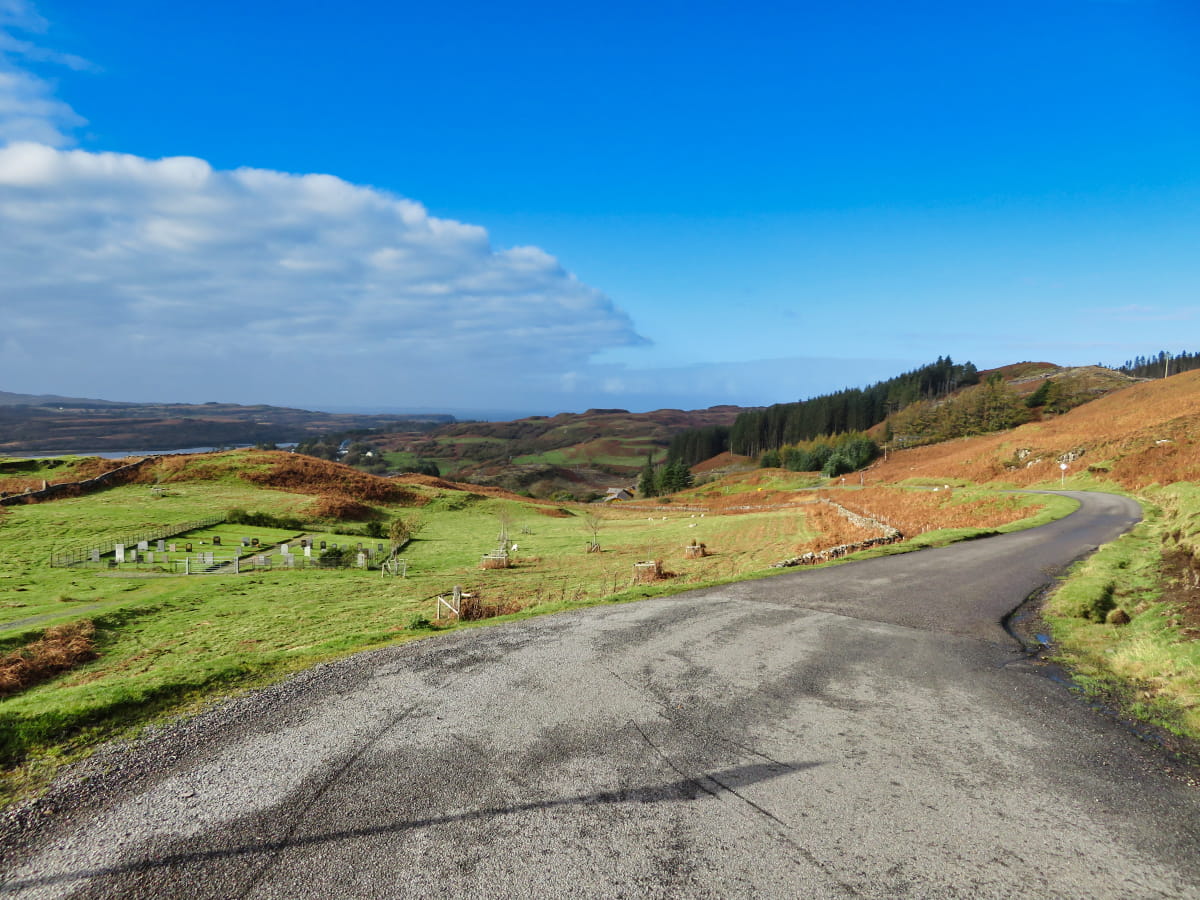
Tourist Information
While there isn’t a whole lot to do in the village of Dervaig, there is at least a shop to stock up on supplies before you leave, as well as a pub to enjoy a well-earned drink on your return. Shortly after departing, you’ll find yourself passing Loch Cuin, which is very photographic, especially in the evening when the setting sun bounces off the water.
Take a look up at the hills rising above the loch and you might see a few red deer roaming about, and during the rutting season between September and November you’ll likely see (and hear) stags battling each other. Reaching around 1.4 metres at shoulder height, red deer are the UK’s largest land mammal, and watching them strut and bellow is a sight to behold.
Be aware that during the rutting season, red deer stags are pumped up with testosterone, and as they have enormous – and sharp – antlers, it’s best not to get too close to them.
The rest of the walk takes you through leafy woodland tracks before opening up to give you a great view of hilly moorland with the Atlantic Ocean stretching out to the horizon beyond.
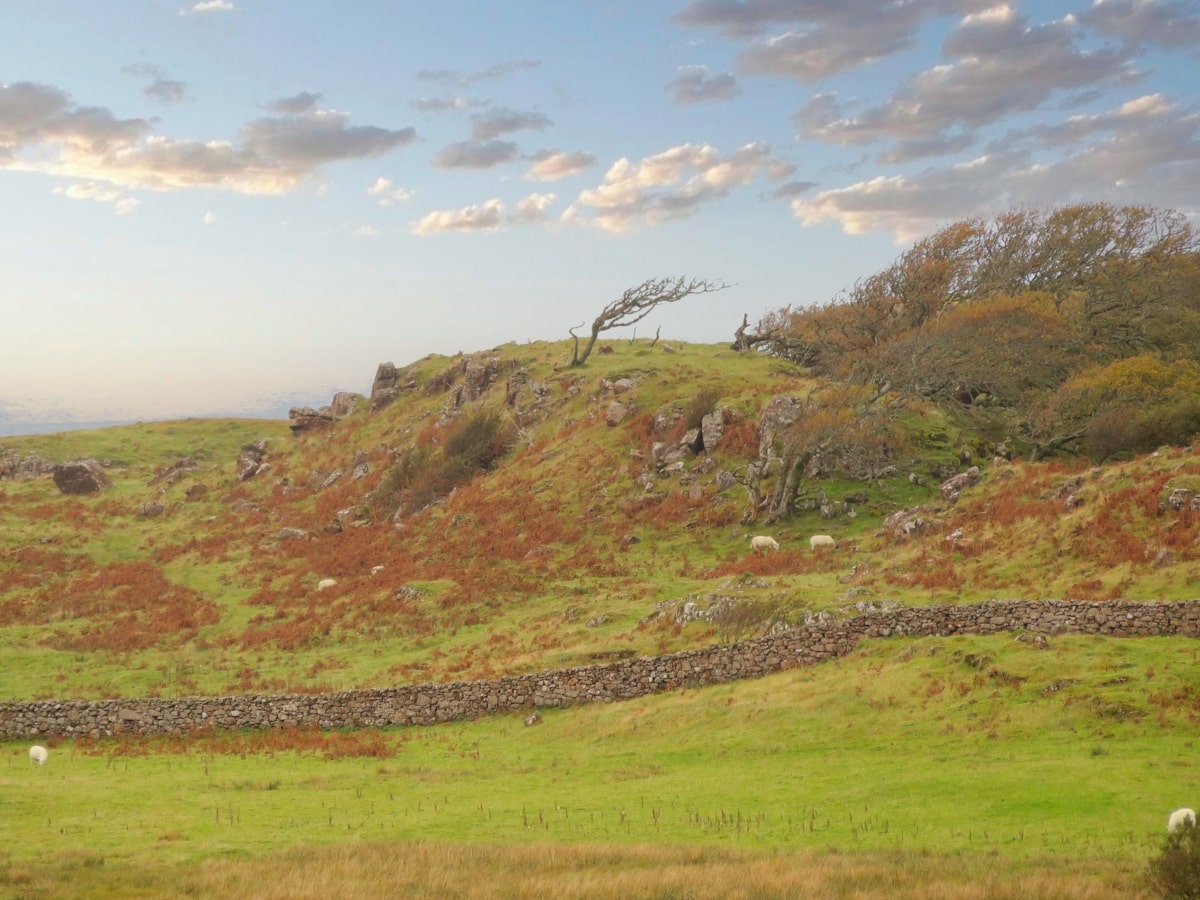
At this point, you might be lucky enough to catch your first glimpse of sea eagles, and I highly recommend you bring a pair of binoculars with you just in case one of the breeding pairs soars overhead.
Further onwards off the main track, you’ll see a small fenced enclosure in a field with several large stones inside, only one of which is still standing. Take a small detour to examine the stones for yourself and pay particular attention to the standing stone, ‘Caliach’, which looks like an old woman wearing a cloak. The reasons why the ancient stones are there are lost in history, but the 9-foot monoliths are still an impressive sight today.
Quinish Point is another one-hour walk from the stones, and once you reach the peninsula you can climb either of the hilltops for views of the Mull coastline and the Hebridean islands in the distance. On a sunny day, the flat top of the nearest hill, Dun Ban, makes a great place to stop for a picnic, but if the weather’s closing in you can head back down to explore the rocky coastline instead.
Directions
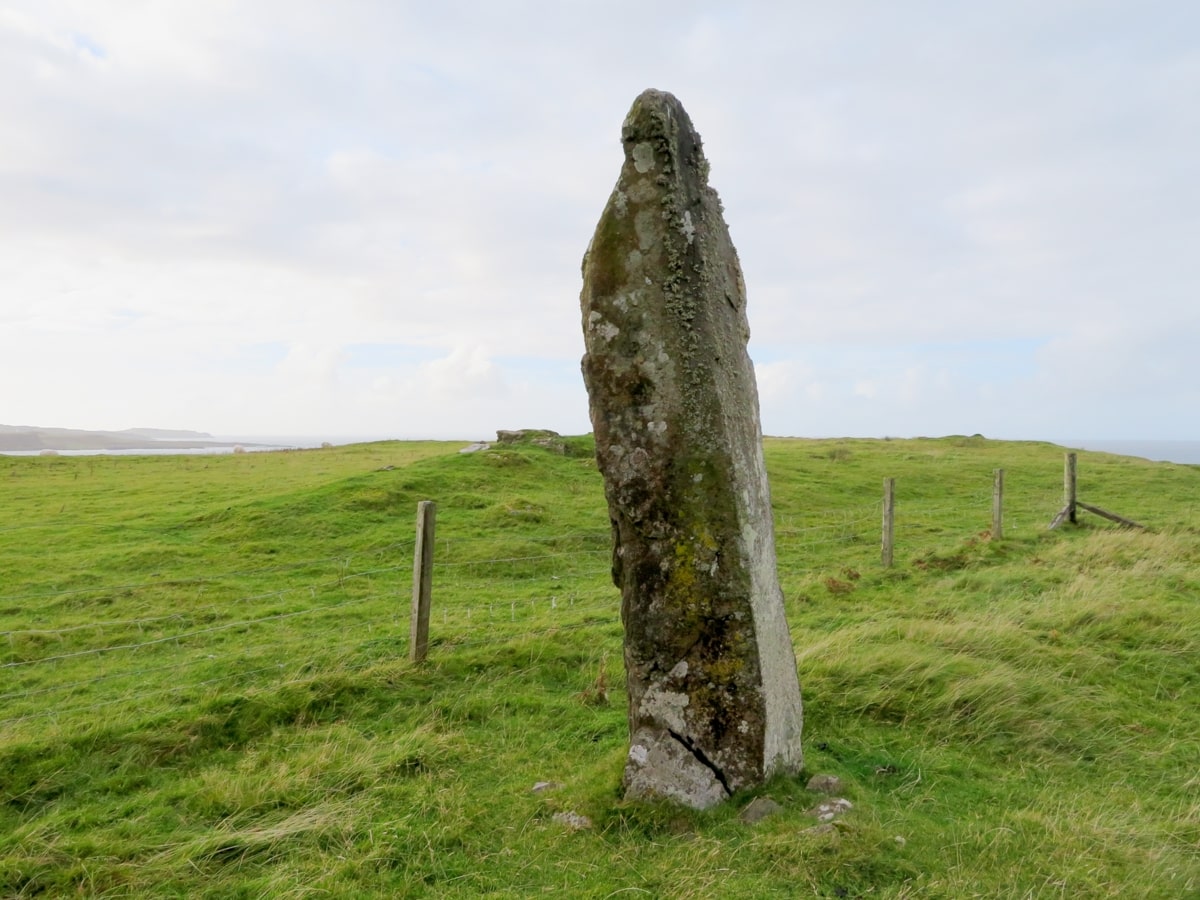
Starting at the village of Dervaig, walk along the public road till you reach a cattle grid which leads onto the main track. This track is well maintained, and while there aren’t many signposts, it’s easy to follow all the way to Quinish Point.
Shortly after passing the cattle grid, you’ll find yourself at the stone-built Quinish gateposts, which lead on into the woodland. Continue along the track till you reach a farmhouse and go straight ahead where the track forks. You’ll soon pass Quinish House on the left, at which point the woodland begins to thin out.
As you enter the small areas of farmland, you’ll see an open expanse of pastures in front of you, with the sea rolling away to the horizon. Stay on the main track, which is laid with gravel, until you reach a field with the standing stones on your left.
Take a close-up look at the stones, and then head back onto the track and up the winding trail to the nearby hill which offers lovely views from the top. Beyond the hill, the trail continues past a series of low-lying walls before ending at another gate with a farmhouse ahead. Pass through the gate (remember to close it behind you) and follow the sign pointing left towards Quinish Point.
This part of the walk leaves the gravel track behind and is mostly well-trodden grassland, but you’ll know you’re on the right trail when you come to another gate with red stone crags on the hill to your right. Heading past the crags, the track now descends slightly downhill before opening up to Quinish Point,where you can walk up either of the two hills for more amazing views.
For your return journey, simply follow the same route back.
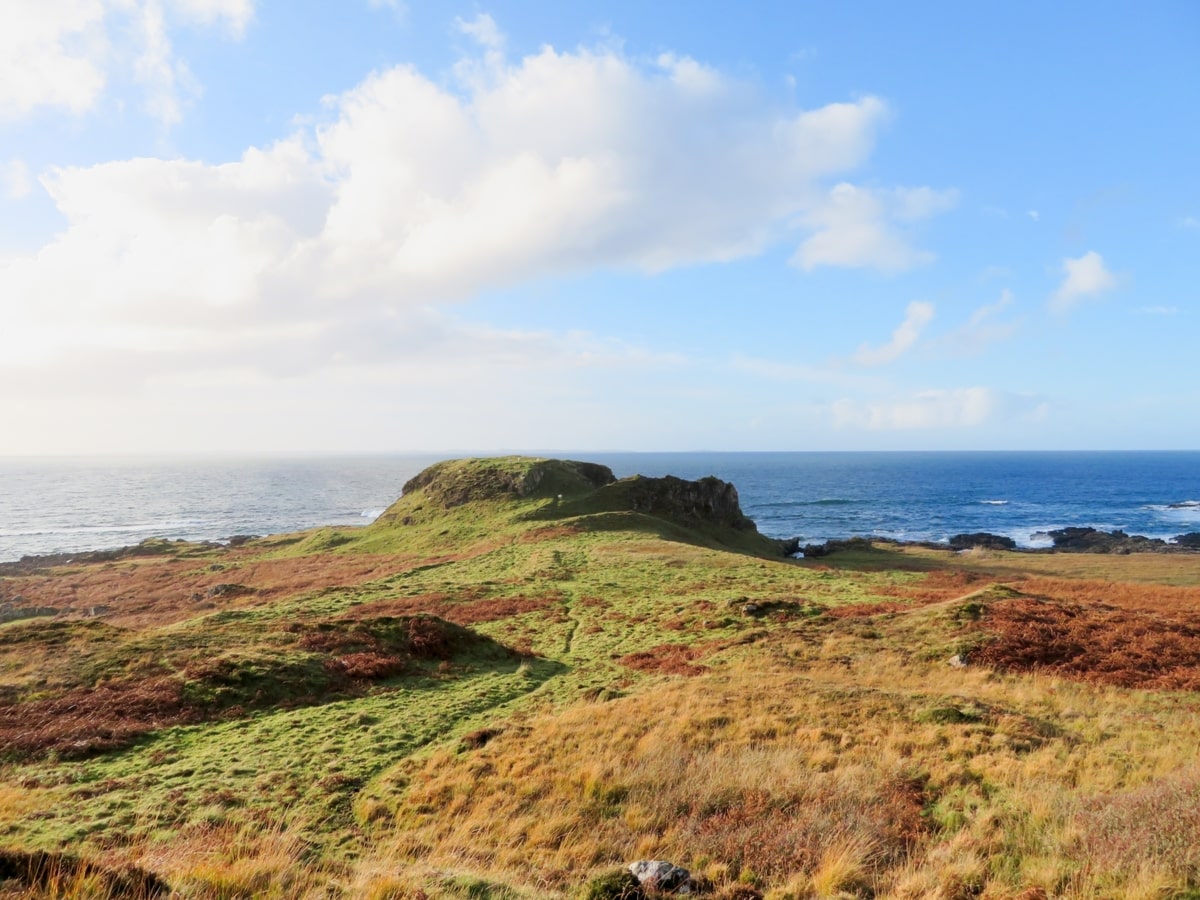
Things to Do
Wildlife Watching: Quinish Point is a prime spot for wildlife enthusiasts. Spot eagles soaring above, otters playing in the sea, and seals basking on the rocks. Seeing the rich biodiversity of the area is a rewarding experience for nature lovers, so make sure you take binoculars with you. Click here to read binocular reviews.
Hiking Through Forests: Explore the forestry that surrounds the point. There’s a variety of trails to choose from, ranging from leisurely to challenging. Admire the scenery, listen to the symphony of bird calls, and just enjoy the experience of being in the secluded woodlands.
Photography at Quinish Point: The picturesque coastline at the edge of the point is a photographer’s dream. Capture the stunning coastal views and the drama of the changing weather, especially during sunrise and sunset, which are particularly magical times for photography.
Paddleboarding and Kayaking: For the adventurous, the waters around Quinish Point are perfect for paddleboarding and kayaking. Glide through the water with the rugged coastline as your backdrop, but make sure you’re wearing a life jacket and don’t attempt this activity unless the sea is calm.
Fishing Trips: Experience the thrill of a fishing trip in the waters around Quinish Point. Whether you’re a seasoned angler or a novice, local fishing charters offer a truly memorable day out.
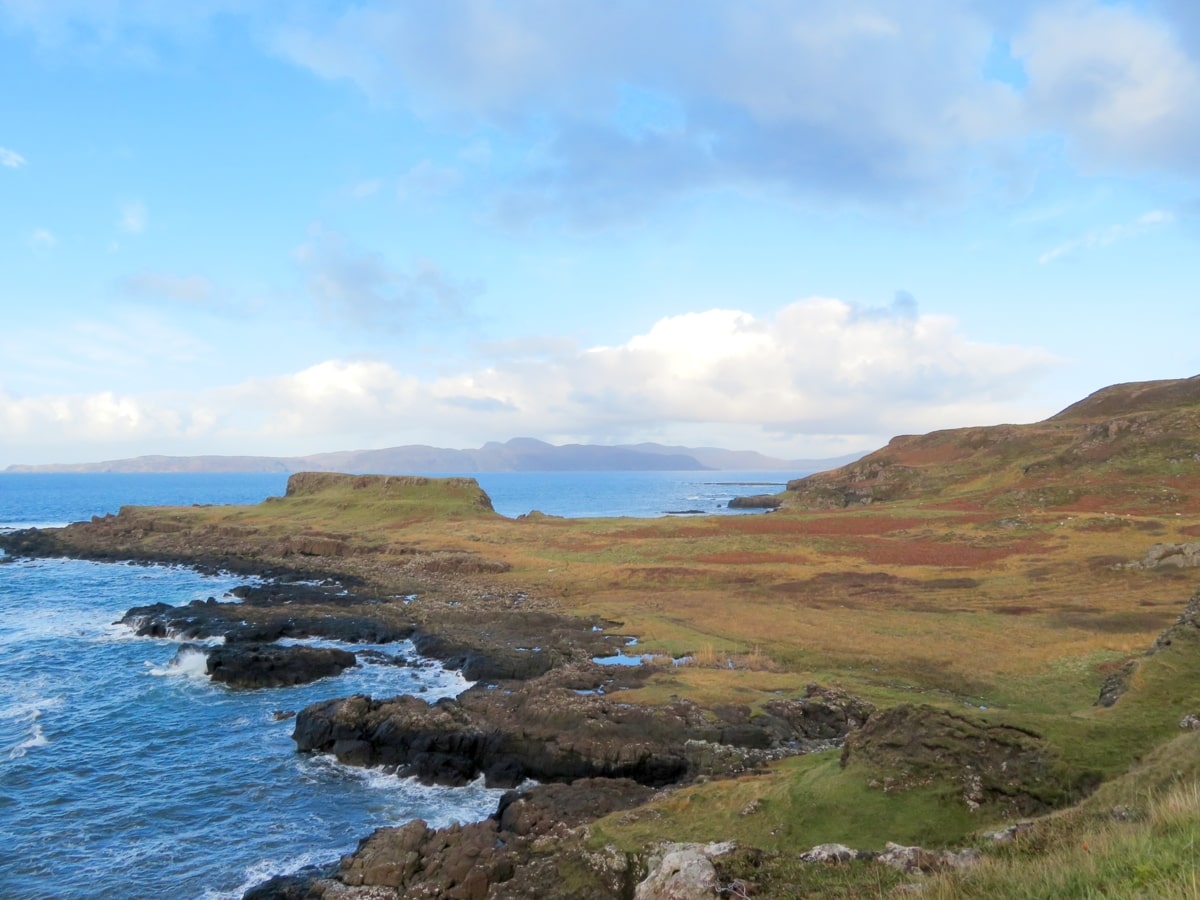
Things to Do Nearby
Kilmore Standing Stones. Dervaig, Isle of Mull, PA75 6QN. 2-minute drive plus a 10-minute walk.
Ancient standing stones in a secluded woodland setting near Dervaig. There are 5 stones in total, although only 2 of them are standing upright. The surrounding pine forest is partially accessible via rough tracks.
The Mull Museum. Columba Buildings, Main St., Tobermory, Isle of Mull, PA75 6NY. 20-minute drive.
A seasonal free-to-visit museum that celebrates the rich history and geology of the island with a collection of exhibits and displays. The museum is entirely independent and run by volunteers.
Tobermory Distillery. Tobermory, Isle of Mull, PA75 6NR. 20-minute drive.
A whisky distillery that features tours and experiences as well as a small gift shop. The distillery is located on the Tobermory Marina, close to the aquarium.
Mull Aquarium. 1 Ledaig, Tobermory, Isle of Mull, PA75 6NR. 20-minute drive.
A small aquarium is located to the side of the Tobermory car park. The aquarium features sustainably collected specimens from local fishermen that are returned to the sea within 4 weeks of capture.
Calgary Beach. Isle of Mull PA75 6QU. 14-minute drive.
A small white-sand beach on the northwest coast of Mull. The shallow bay is set inland and is therefore protected from the sea to the north and south, making it suitable for families with small children. There is a small car park accessible from the B8073.
Frequently Asked Questions
Can you walk anywhere on Mull?
Scotland’s ‘Right to Roam’ laws, part of the Land Reform (Scotland) Act 2003, generally permit access to most land and inland water in Scotland for recreational and other purposes. However, these rights come with responsibilities; walkers are required to respect the privacy, safety, and livelihoods of those living or working on the land, as well as the environment itself.
What is the Isle of Mull famous for?
The Isle of Mull is renowned for several reasons.
Wildlife: The Isle of Mull is considered one of the best places in the UK for wildlife spotting.
Scenic Beauty: The island is famous for its breathtaking landscapes, which include rugged mountains, stunning coastlines, and beautiful beaches.
Castles: The Isle of Mull is home to several historic castles, including Duart Castle and Moy Castle.
Colourful Towns: The island’s main town, Tobermory, is known for its brightly coloured waterfront buildings and is often recognised from the children’s television series ‘Balamory’.
Iona Abbey: Located on the neighbouring island of Iona, which is accessible from Mull, the abbey is one of Scotland’s most important religious sites.
How many days do you need on the Isle of Mull?
How long you should spend on the Isle of Mull depends on your interests, but a good rule of thumb would be between 3 and 5 days.
What is the best month to visit Mull?
The best time to visit the Isle of Mull largely depends on what you’re interested in seeing or doing. However, many travellers find that May through September provide the most enjoyable experience.

